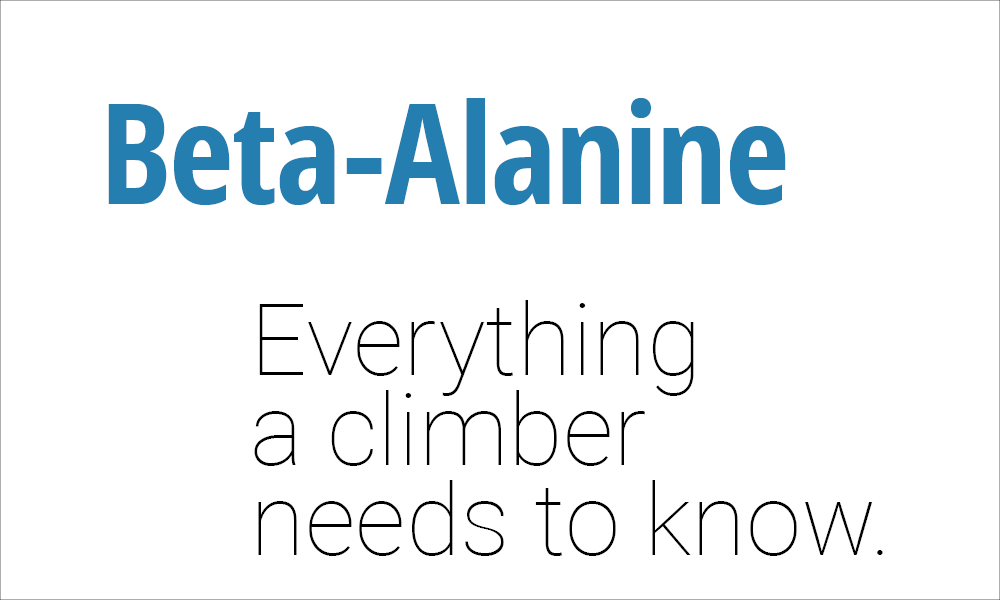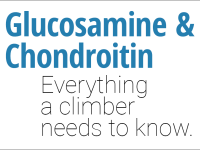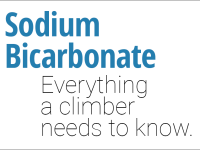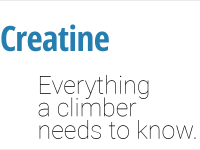-or-
1,600 mg (heaping ⅓ tsp), 4x/Day
-or-
800 mg, (shallow ¼ tsp), 4x/Day
What Is Beta-Alanine?
Beta-alanine is a sports supplement with a primary effect of improving power endurance—your ability to maintain power even while fatigued. Beta-alanine accomplishes this by increasing muscle carnosine levels, thereby increasing your muscle’s ability to combat exercise-related drops in pH and subsequent fatigue.
While you can find supplements containing whole carnosine, they are no more effective than pure beta-alanine and should be considered a waste of money. Any whole carnosine ingested will be broken down by our digestive system into beta-alanine and histidine, but only beta-alanine increases muscle carnosine synthesis. Thus, a supplement containing whole carnosine is only as powerful as the beta-alanine it contains, which is 50% of the molecule; they are more expensive and less potent.
Beta-alanine reliably and significantly increases muscle carnosine—the longer you supplement (and the more you supplement with), the higher muscle carnosine levels rise.1–4 After 4 weeks, muscle carnosine is typically 60% higher; after 10 weeks, it’s 80% higher.1 Given the strong tapering after 10 weeks, we shouldn’t expect muscle carnosine to rise much more, but no study has attempted to assess this so the maximum amount of carnosine a muscle can store is unknown. When supplementation ceases, muscle carnosine levels slowly return to baseline over a period of 6 to 15 weeks depending on total muscle content (or an estimated 2% per week).3,4
The Benefits of Beta-Alanine
All of beta-alanine’s benefits are tied to increased muscle carnosine, which primarily exerts its benefits through improved muscle buffering capacity. Carnosine is a relatively minor buffer in the total scheme of exercise (which is why beta-alanine can’t double your endurance), but still an important one—especially when acidity is just beginning to increase.
Carnosine may also play a role in muscle contraction, specifically by augmenting the speed at which a muscle relaxes after contracting. In one study, beta-alanine improved the rate of muscle relaxation by 7-12%.5 Muscle relaxation speed is critical for climbers because they rely heavily on isometric contractions (of the forearms), and isometric contractions can completely occlude (cut off) blood flow at only 50 to 65% of your max contractile strength.6 When a muscle’s blood supply is cut off, it has no access to oxygen to power aerobic energy production and must rely on anaerobic sources instead, which increase proton build-up (increase acidity) and contribute pumping out and fatigue. The faster a climber’s forearm relaxes after releasing a hold, the faster oxygen can return to the muscle and the faster your body can switch back to aerobic energy production and start returning pH to normal levels—at least until you grip something else.
Ultimately, the effect of both improved muscle buffering capacity and relaxation time is better endurance during high-intensity exercise, and studies consistently find that beta-alanine improves performance in the 1 to 4 minute window (as measured by “total work done” or “time to exhaustion”).1,2,7–20 Even more specifically, beta-alanine improves power maintenance—an athlete’s ability to maintain normal levels of power even when pumped or nearing fatigue. When looking only at the final third to quarter of a bout of high-intensity exercise, beta-alanine can improve power by around 7-13%.8,10,14,15,17,19,20
Benefits for Sport Climbing
For a sport climber, better power maintenance is highly meaningful and will improve performance during the late stages of a route—your grip strength will experience much less tapering off as fatigue sets in, and your overall endurance will be better. Since climbs normally consist of sections with varying difficulty (and the ability to rest on easier holds), even minor improvements in power endurance could yield disproportionate results if they allow you to push through cruxes to obtain rest.
Benefits for Bouldering
For a boulderer, beta-alanine will have little to no effect (but this doesn’t mean a boulderer cannot benefit from it—read the next section on training). Most boulder problems are too short to cause acidosis-related fatigue and failure, and beta-alanine only increases power when low muscle pH would normally reduce it. There are exceptions, of course, but they are just that—exceptions infrequently encountered, like long traverses or particularly pumpy overhung problems.
Benefits for Training
The key benefit of supplementing with beta-alanine—the absolute best reason to supplement with it—is improving your ability to train. Whether doing climbing drills or resistance training, the campus board or the systems wall, the ability to persevere longer and with greater power means more training gains—and those gains stack over time. Any climber regardless of discipline can benefit from increased training potential.
Technical Information on How Beta-Alanine/Carnosine Works
Most people probably won’t care why beta-alanine works, only that it does work. Still, a brief overview of the chemistry of intramuscular buffers can go a long way towards explaining why it’s well within our expectations that increasing muscle carnosine would improve power maintenance for all high-intensity exercise of sufficient duration (i.e., at least one minute).
A muscle cell at rest has a pH of around 7 to 7.15, but will dip as low as 6.2 during high-intensity exercise.21 Carnosine has a pKa of 6.83,11 which means it has the greatest buffering potential when muscle pH is near to 6.83. Based off carnosine’s pKa, we can also predict that carnosine is significantly less able to buffer against drops in pH when muscle pH is still high—so it cannot prevent the onset of acidosis-related fatigue, it can only increase the time we can withstand it.
When muscle pH reaches 6.83, carnosine is maximally able to soak up the protons flowing in, and can stall further drops in muscle pH—at least until its buffering capacity is overwhelmed. By temporarily preventing pH from dropping, muscle contractile strength and velocity are better maintained,22 and muscle power will remain greater.
Carnosine is limited, however—even when boosted with beta-alanine—and can only buffer against an interminable tide of protons for so long. When carnosine’s buffering capacity is overwhelmed, pH will begin to drop once more and carnosine will cease to be an efficient buffer. At this point, bicarbonate (with a pKa of 6.4) becomes the better buffer and aids in the last-ditch effort to stymie muscle failure.
As could be predicted, the effects of carnosine and bicarbonate are additive, and athletes who supplement with both beta-alanine and sodium bicarbonate tend to perform better than athletes supplementing with only one.23–25
Adverse Effects
Beta-alanine is extremely safe with only one reported adverse effect: paresthesia, a tingling/itching sensation in the skin. Paresthesia can be avoided in most cases by keeping doses under 800 mg,26 and it rises in intensity with the size of the dose and the speed of absorption—so taking beta-alanine with a meal can reduce or eliminate it. Paresthesia is harmless, but it’s best not to be taken by surprise when your ears or legs start itching after your first dose of beta-alanine.
There is also a potential concern that beta-alanine will interfere with taurine metabolism. Beta-alanine and taurine share the same blood transporter, so any increase in plasma beta-alanine will cause a decrease in plasma taurine. Taurine is an important amino acid for general health, and a chronic decrease in plasma taurine could cause a deficiency and major health problems. The key word here, though, is chronic decrease—something that does not appear to happen outside very specific lab-created conditions.
In all cases, a dose of beta-alanine will temporarily depress plasma taurine, but plasma taurine will return to normal as soon as the beta-alanine is fully taken up by the muscles or excreted, a process that takes a couple hours with a large dose. This means that with a normal human dosing protocol, plasma taurine will only be depressed for a few hours daily, and cellular taurine uptake will occur as normal for the remainder.
When taurine deficiency has been created under laboratory conditions, it’s produced by feeding rats a constant supply of beta-alanine by spiking their water with it. This ensures that plasma beta-alanine consistently remains high—but it doesn’t accurately represent what happens with beta-alanine supplementation in humans. In short, beta-alanine-induced taurine deficiency is an experimental laboratory condition, not a real life one.
If you’re still worried (even though you shouldn’t be!), you can do one of two things to allay your fear:
First, you can cycle the beta-alanine. Given beta-alanine’s slow washout rate,3,4 you can increase muscle carnosine over a couple months and then take a few weeks off before starting again, during which time muscle carnosine levels will only marginally drop.
Second, you can supplement with taurine in addition to beta-alanine (but not at the same time of day!). Supplemental taurine will further increase plasma taurine levels and hypothetically improve taurine delivery to the cells that need it (though this hypothesis needs to be better tested). Because taurine and beta-alanine share the same transporter, though, you cannot take them at the same time, as they will compete with each other and reduce the efficacy of both.
Honestly, these strategies are completely unnecessary. The research indicates that beta-alanine is extremely safe, and free of side effects except for paresthesia. As long as you don’t add beta-alanine to your water supply, you aren’t going to experience any meaningful suppression of plasma taurine.
Dosage
Dosing beta-alanine for optimum effect and minimum waste is still an inexact science, but one thing that is absolutely clear is that muscle carnosine levels rise linearly with supplemental beta-alanine intake, and that absolute beta-alanine intake over a period of time is the most important predictor of final muscle carnosine levels.29 Beyond these basic assertions, much of what we “know” about dosing is just a reflection of study protocol—most studies use 800 mg doses of beta-alanine to prevent unblinding due to paresthesia, so beta-alanine doses are usually considered in 800 mg increments.
Aside from generally preventing paresthesia, there’s nothing magic about 800 mg. From a measuring standpoint, it’s inconvenient unless your brand happens to supply with you an 800 mg scoop. If you don’t mind the feeling of paresthesia, then 1,000 mg is much easier to measure both from a volume standpoint (1,000 mg = ¼ teaspoon) and from a weight standpoint (food scales usually measure in whole gram increments). Even if you do dislike paresthesia, a 1,000 mg dose taken with food will only rarely cause paresthesia.
With this is mind, I recommend using whichever “base” measurement is most convenient to you: 800 mg if you have a scoop, or 1,000 mg if you do not. There is no need to perform complex acts of measuring just to reach an arbitrary figure.
Here, then, is my recommended dosing schedule:
Week 1
Choose ONE of the following, depending on your tolerance for paresthesia (if you’ve never experienced paresthesia, start with the 800 mg/1,000 mg dose).
- 3,200 mg/4,000 mg, 2x daily
- 1,600 mg/2,000 mg, 4x daily
- 800 mg/1,000 mg, 8x daily
Week 2 & On
Choose ONE of the following, depending on your tolerance for paresthesia (if you’ve never experienced paresthesia, start with the 800/1,000 mg dose).
- 1,600mg /2,000 mg, 2x daily
- 800 mg/1,000 mg, 4x daily
Week 1 has a higher dose in order to initially “load” the muscle with carnosine faster. Starting week 2, the dose is reduced to maintenance levels (though muscle carnosine will still increase further over the next few weeks). There is no risk to continuing with the loading dose from week 1, but it will become more and more wasteful as muscle carnosine increases towards maximum and your body excretes the beta-alanine it cannot use.
How to Choose the Right Product
Beta-alanine is a common “stack” ingredient, and as such you will often find it in pre-workout mixes, peri-workout mixes, and post-workout mixes. I recommend avoiding these unless you have a compelling reason to take one. I cannot speak for all mixes out there, but generally speaking you pay a premium for ingredients that are mostly not evidence-backed. Furthermore, when beta-alanine is mixed with other ingredients that you would normally supplement with, such as creatine it can remove your freedom to control your own dose. Therefore, when choosing a beta-alanine supplement, my first recommendation is that you look for a “pure” supplement—just the beta-alanine, in either powder or capsule form.
A second consideration is whether your supplement manufacturer is trustworthy or not. Supplement adulteration and substitution is a known problem in the industry (even if not frequently encountered), and buying from a reputable manufacturer is a good way to ensure product purity and potency.
One way you can determine this is by looking for the “Trusted by Sport” logo, which is a third-party certification offered by the organization Informed Choice. To obtain this certification, companies pay to have random batches of their products tested for adulteration, and while this logo is not an absolute guarantee of purity, it’s about as close as you can get. If you are a competitor or have a reasonable expectation that you may be drug tested, I highly recommend looking for this logo.
A second way you can reasonably determine that a product won’t contain ineffective ingredients is to look for brand name ingredients, such as CarnoSyn® or BetaSYNTH™. For numerous supplements in the sports world, single manufacturers have risen to create products of well-tested purity and potency, and these manufacturers have a stake in maintaining the credibility of their brand. Often, the difference in price between a generic ingredient made by an unknown manufacturer and a brand-name ingredient is nominal, and the peace of mind is worth the extra few dollars of investment.
You can buy beta-alanine (including CarnoSyn® brand beta-alanine) from TrueNutrition.com, which is my preferred source because they offer bulk ingredients in minimal packaging for very reasonable prices (shipping is less reasonable, so it pays to order supplements from them en masse). TrueNutrition.com does not offer any bulk “Trusted by Sport” products because they are a wholesaler, not a manufacturer, and basically act as a middleman between the ingredient manufacturer and you. I have reasonable confidence in the purity of their products, and if you choose branded products like CarnoSyn® then it’s truly unlikely it’ll be adulterated.
If you do use TrueNutrition.com, you can use the code BNRY639 to get a 5% discount off your entire order. Full disclosure, I get a small kickback if you use this code and are a new customer—but hey, you get something too. And just so you know I offer this in good faith, be sure to check their Promo page for any better deals, because you only get to choose one. Usually 5% off is the best deal, but sometimes it’s not!
Conclusion
Beta-alanine is well-worth the investment for a climber of any discipline except perhaps the gung-ho, never-gonna-train boulderer. Beta-alanine reliably increases muscle carnosine, which reliably improves power endurance, which reliably improves performance for high-intensity exercise lasting longer than a minute. This is particularly useful for sport climbers keen to preserve power even while in the throes of a debilitating pump, but it’s even better in the context of training where extra mileage translates to extra gains and extra gains compound across training sessions.
If you supplement with beta-alanine, be aware that it will likely cause paresthesia—a harmless tingling or itching sensation—if you take a dose larger than 800 mg. You can minimize this side effect by taking beta-alanine with a meal.
There is no need to cycle beta-alanine, but a two-week loading period consisting of extra doses or larger doses is recommended to help you initially boost muscle carnosine faster. After two weeks, a smaller dose can be used to maintain levels.
When choosing a beta-alanine supplement, opt for companies that have earned the “Trusted by Sport” logo for their beta-alanine product or who use a reputable ingredient manufacturer like CarnoSyn® or BetaSYNTH™.














can I start to take both Creatine and B-alanine together or it’s better to take them in separate periods?
You can take them together!
Hey you say up the top in the Facts at A Glace to load Beta Alanine for 1 week, but in the article it says to load for 2 weeks?
Thanks for pointing that out! I’ve now updated it. Should be a week loading phase, though you’ll find others sometimes encourage a two-week phase—you’ll get to the same place either way, but it’s probably a bit overkill to load for two full weeks.
Thanks for this write up. I’m wondering about taking Citrulline Malate and Beta-Alanine together? Would they cancel each other out? Or work together?
They work together, though I wouldn’t expect synergistically—that is to say, they will both work as well as they would on their own with no expected interactions between the two.
For week 2 and on, is it bad to take 3200 mg 1x per day instead of 1600 2x? It’s a lot more convenient for me that way? I understand that could reduce the absorption a bit but will it be substantial?
No, it’s not bad—you may absorb slightly less (but we really can’t say how much, if any), and you’ll definitely be more likely to experience paresthesia (or stronger paresthesia), but it’s not harmful.
After reading the dosage part I’m just wondering if there’s anything “wrong” with just taking a single 3200mg dose instead of two 1800mg doses. It’s easier for me and I tend to forget to take the second dose every couple of days. Reading your post it’s not clear if there’s a real advantage to taking multiple doses VS 1 dose except preventing parasthesia which I don’t mind at all.
No, there’s nothing wrong with taking a single large dose instead of two smaller ones. There aren’t enough studies to tell us whether you’ll lose out on any absorption from taking one large dose, but even if you do it’s likely to be small and over time not important.